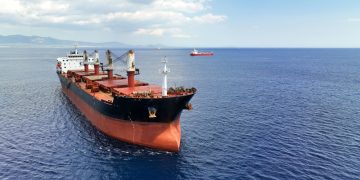Looking at current conditions of the industry and expected cost and availability of low-sulfur marine fuel after two years, global maritime industry group Wilhelmsen expects many shipowners will consider the option to retrofit exhaust gas scrubbers for their active vessels.
The company notes top considerations before planning retrofit of exhaust gas scrubbers include:
- Vessel structure: Does your vessel’s structural design allow for the installation of exhaust gas scrubbing equipment?
- Vessel age and size: With older vessels, there is less payback time for investment of the EGCS installation. For a very old vessel, it may be more economical to switch to cleaner fuel alternatives.
- Vessel type: High public profile vessels, especially cruise and passenger types, are more scrutinized than others for Green credentials.
- Market conditions: If the vessel is not commercially active, return of investment for the installation of EGCS may not be achieved.
- Types of exhaust gas scrubbers: Open loop scrubbers may be more suitable for vessels performing long voyages compared to other types. Closed loop scrubbers are of low flexibility. Hybrid type appear to be a more popular as they cope with most situations.
- Support and maintenance: You will need to also consider reliable manufacturers that can provide customer and technical support to you after installation.
- Modification works: The retrofitting project is complicated and work must be started well in advance. Shipyards currently lack retrofit experience, so a good project manager is recommended. A turnkey solution may also be considered. A typical exhaust scrubber retrofit can take 4-6 weeks in shipyard – excluding the pre-planning design and engineering stages.
After selecting the exhaust gas scrubber type, there are further details for shipowners to consider for every vessel, according to Wilhelmsen:
- Materials and corrosion: As exhaust gas scrubber units and the full system components face very corrosive products at high temperature, it is important to carefully access materials offered by makers, as the scrubber, pipes, tanks, valves, coating systems, containment systems, monitoring equipment.
- Electrical loads: Additional electric power is required to run sea water and process pumps. Other loads include possible exhaust fans, separators, dosing units, control processors, sensors and monitoring equipment. Assessment of available power is to be carefully carried out under different conditions.
- Installation spaces: Depending on the complexity of the system, a vessel will have to be checked for funnel modification, installation of deck compartment and modification of cargo hold.
- Back pressure: Some exhaust gas scrubber units may produce back pressure. With increased back pressure, the engine needs to use more power to overcome it. This can be reduced by careful design of the exhaust gas scrubber unit.
- Hull protection: The scrubber overboard pipe and hull in the vicinity needs to be protected and kept a safe distances from any other sea chests.
- Safety and crew training: Crew should be fully trained to handle the system and hazardous chemicals used for the process. A new set of manuals is to be prepared and maintained and will be subject to scrutiny.
“I highly recommend shipowners to start planning their strategy to comply with SOx 2020 regulation as soon as possible. If EGCS retrofit is selected, the process must start soonest so that the vessel is ready by 1 January 2020 and owner / charterer can obtain a quick payback for the project. Shipyard capacity is also available at this time, but likely to tighten in the years after 2020 as more ships opt for EGCS retrofit, Sanjiv Rastogi,” said Head of New Building and Technical Services, WSM.
































































